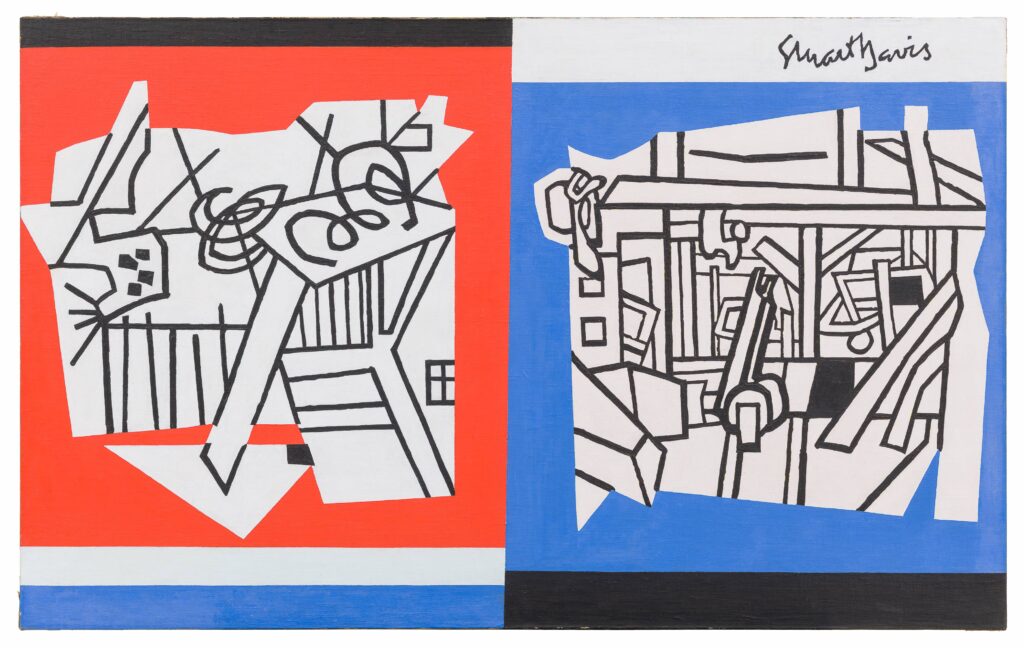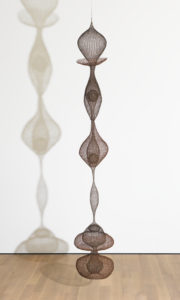
Stuart Davis, Deuce, 1954; collection SFMOMA, Gift of Mrs. E. S. Heller; ©️ Estate of Stuart Davis / Licensed by VAGA at ARS, New York
Key Concepts
- Shape, color, and line
- Choices artists make
- Mood
- Musical associations
Materials
- One piece of 9” x 12” white construction paper
- 4 1/2” x 6” red and blue construction paper
- White construction paper (9” x 12”) cut in half
- White, black, and blue construction paper strips in a variety of sizes – 1” x 9”, 3⁄4” x 9”, and 1⁄2” x 9”
- Black markers
- Glue
- Scissors
Introduction
- Look at the colors in this work and take the temperature of this painting. Is it hot or cool? Are some areas warm, but others cool?
[In general, shades of red, yellow, and orange are considered warm colors. They have the longest wavelengths on the color spectrum and advance toward your eyes. Cool colors, including green, blue and violet, have shorter wavelengths and recede.] - If color can be hot and cool, what about the lines? Can they be noisy or quiet? Calm or frantic? Bold or shy? Lyrical or staccato? Do they have a rhythm? What do you see that makes you say that?
- Stuart Davis loved jazz and ragtime music, and he often painted while listening to records. Can you imagine what the music sounded like that inspired Deuce? Do you think he listened to different music for each side of the painting? If so, what do you see that makes you say that?
Instructions
- Glue the red and blue 4 1/2” x 6” sheets side by side on the 9” x 12” white paper.
- On one of the two halves of the white paper, use black markers to create a line drawing that feels slow, calm, quiet, and lyrical.
- On the other half, make a line drawing that feels loud, busy, fast, and cacophonous.
- Cut around your two drawings and decide which picture should go on the red side and which on the blue side.
- Davis painted black, white, and blue stripes at the top and bottom of each half of the painting. Using an assortment of white, black, and blue paper, add some strips to complete your work.
Variation
Instead using blue and red background paper, choose your own warm and cool colors, or complementary colors (yellow and violet, red and green, blue and orange). How might different colors change the energy or tempo of the artwork? How might music influence your choice of color?
Relevant Information
Stuart Davis linked his work directly to American life and jazz. He equated jazz with modern art and felt improvisation was the essence of the creative spirit. “Jazz music always plays a part in my inspiration, because I always think of it as art. And I think, well if they can do it, maybe I can too. Only I’m making a painting,” he once said.
Discussion
- Stuart Davis painted Deuce in 1954, when jazz was popular with artists in New York City.
- What kind of music do you think artists might like to paint to today?
- What kind of music do you listen to?
- Have you ever made drawings while listening to your favorite music?
